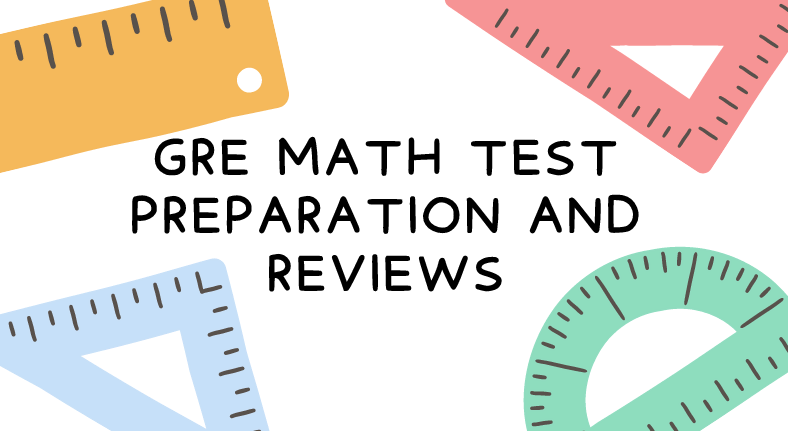Before you apply to a Ph.D. program, you must be clear on why you want to pursue a Ph.D. in the US or any other country. The entire PhD takes 5 years.
The majority of US programs offer fully funded PhD Admissions. After doing PhD, people usually seek positions in academia and industry.
Step 1: Explore top schools ranking
To get an idea of the GRE average score requirement, check the subject ranking of the top 50 or 100 schools in the U.S. You should have an idea before embarking on your USA Ph.D. Scholarship journey: what type of school do you want to go to: state schools, private schools, IVY league, top 5, top 10, top 20, etc. For direct admissions, the universities may accept +300, given that you have good academic grades, research experience, and recommendations from well-known professors. Ideally, you should target to score +310 on the GRE for decent schools. For Computer Science and Electrical Engineering, competition would be high.
Step 2: Check the application deadlines
This is very important to plan your application and overall preparation time for the GRE.
Always aim for early application deadlines. For the U.S., you can start contacting professors and applying in the summer or early fall (August/September) one year prior to your intended date of admission. You’re setting the benchmark of the incoming class so DO NOT miss the early applications. Please note that every university application has a cost, so do check the cost of university applications before applying.
Step 3: Prepare For the Exam
Once you have an idea of what GRE score you’re aiming for and deadlines dates, start preparing for the GRE.
If you have already taken the GRE exam, based on your score, determine if you want a retake or would like to go ahead with the score you already have.
Start your preparation by following the GRE guide mentioned on the Scholar Den website. Make sure that you take the GRE by the end of August of the preceding year for which you are aiming to apply. If you wish to apply for fall 2025, make sure you are done with the GRE & TOEFL by the end of August 2024.
Step 4: Reviewing Schools Websites
If you go ahead with the application cycle, choose your schools based on all the variables that are important to you: ranking, funding, professors, research area, geography, employment rate, culture, class size, acceptance rate, etc.
Make a spreadsheet to save information like average GRE & TOEFL/IELTS scores, CGPA, app fee, etc.
Step 5: Shortlisting
After you have reviewed the schools in detail, shortlist about 6 – 8 schools, research them in more detail, and look for variables like class profiles, research area, professors, field of specialization, culture, employment, etc.
While shortlisting schools, to increase your chances of admission, make sure your profile is better than the average class profile.
While applying, you can follow the following distribution.
Ambitious Universities:
These are the schools that you want to join, but average admission stats discourage you from applying there.
Sometimes, we underestimate ourselves. Apply to these schools with the best of your efforts. Average students from Scholar Den’s platform have made it to the top 10 schools, including Ivy League schools, so why can’t you?
Moderate Universities:
Your stats match with the average stats of admitted students in these schools, and you are hopeful that you can get in, too.
Safe Universities:
You supersede the stats of admitted students of these schools. You are highly positive about getting into these schools.
Step 6: Academic Documents Preparation
Based on the university shortlisting, make sure that you have all the required academic documents, including HEC/IBCC verification. Additional program requirements include transcripts & degree copies in sealed. If your degree has not yet been completed, request a hope certificate.
If you have done 2 years of bachelor’s and 2 years of master’s, then you need to get your degree verified by WES. You need to check with the admission committee if they require a WES evaluation or not. Some schools prefer to evaluate internally.
Step 7: Contact Faculty/School
Some schools follow a standard admission process, and faculty members don’t play a vital role, but in most schools, it is highly advisable to contact relevant professors to increase your chances for admission. However, it’s not advisable to flood the mailbox of the entire faculty of the department with the same generic emails; contacting one or two faculty members who share your research interests is highly encouraged. Don’t spam; nobody likes a spammer. See what that faculty member is working on now days, read 1-2 publications of his/her to have an idea of what type of research professor is doing. Send him/her a short but convincing email. Do not just ask for funding in the very first email. Ask if he is looking for new students and if you should apply.
Note: Do not contact the faculty haphazardly. Usually, if the faculty should be contacted, they have mentioned it on their website. You can also inquire if the faculty should be contacted by the school coordinator. Moreover, if the online application of the university requires the names of faculty members whom you contacted, you must interact with faculty members. Therefore, it is important to apply early and know what exactly you need to do.
Step 8: Work on the application
Once you’ve planned the application, start with the one that you intend to submit first.
The first thing you need to do is to start is to sign up for the application you want to apply for and then start working on the Recommendation letters and Application Essays.
Step 9: Recommendation Letters
Do check in advance if the school requires recommendation letters by email/online and how many of them. Talk to your recommenders in advance and ask for their recommendations. Try to convince them to write a strong letter for you.
Step 10: Application Essays
Application essays are one of the most important components of the admission process. Most schools look for students with strong academic, research, teaching, diversity, community work backgrounds, etc.
Almost every US school requires a statement of purpose and/or personal statement. These are some of the most critical parts of your application.
Information on how to write a convincing motivational letter is mentioned on the website. This is the part of the application where you can make a difference through your writing and the power to convince others. Invest a healthy amount of time to write and refine it. Ask your seniors and mentors for feedback and guidance.
*Don’t just wait till the end to start writing it because this is a part of your application that’s going to take a lot of your time. So, start early.
Step 11: Submitting the application
Don’t wait for the deadlines. Start early, submit early. Some universities have long deadlines, but they start processing the applications on a case-to-case basis. To be considered for the funding, apply in the earlier days of the application opening. Make sure each part of the application is complete. Avoid typos or spelling mistakes.
Step 12: Interview
Some but not all schools require you to appear for an interview. While there is nothing to be afraid of, it’s always encouraged to do your homework. Read your application again to recall what you had written earlier. Study the research work of the faculty member that you had mentioned to work with. Prepare answers to generic questions like why this school, why this faculty member, why this program? Etc.
Step 13: Selection & Visa
Congratulations! You have made it through. After you accept the offer made by the school, then they issue you an I20 form, which would be required to apply for a Visa.
Step 12: Review Phase
After the interview, if the admission committee selects you, then you will be informed about the selection/rejection along with the scholarship information. In case you are on the waiting list, then your application status will show “Under Review”.
Step 13: Visa
After you accept the offer made by the graduate school, then they issue you an I-20 form, which would be required to apply for a Visa.










3 Responses
I need scholarship
I need scholarship in medical microbiology
Sure, avail our scholarship service, visit https://scholarden.com/services/usa-scholarship for more details.